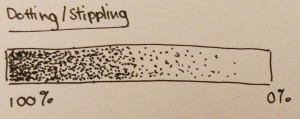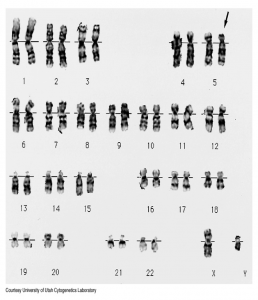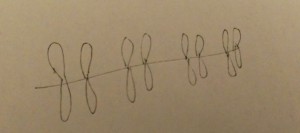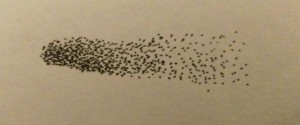Work-in-progress
Biology
In this short post, I will be covering how I will be doing the biology themed piece of work. After much internal debate, I have decided to go with the chromosomes as a base to start with.
The medium would be in pen (0.05, black). I will be stippling the entire piece. I enjoy stippling as much as some would consider it time consuming. I like the control I get with it, you get to decide where each dot goes, it’s like drawing at a micro level. I really like that level detail that comes with it. The process just involves dotting basically. Areas that are to be darker just require a higher density of dots, lighter areas involve dots.

If you think about, the dots seem to represent the numerous genes present on DNA and chromosomes, so it is appropriate to have dots/genes make up the chromosomes. I really hope I am making sense.
I am as much a science student as I am an art student. I like to be as scientifically correct as possible. In this case, I decided to stick with the ‘rules’ that come with the chromosomes. And I will be sticking to these rules while drawing this work. Here is an image that I showed in a previous post. I will be referring to it to illustrate the rules.

The first thing to note is that the midpoint of every chromosome pair is the same. See the reference line that runs through the middle of each pair? That’s the common point (it’s called a centromere). Next, the length of chromosomes in each pair are the same length. If you look close enough, you will find that the chromosomes aren’t uniform in colour, there are bands of different opacities. That’s the staining pattern and is usually the same within each pair. The last rule is the direction in which each chromosome arm bends in. Sometimes they are vertical but they can be bent. They usually only bend away from the centromere.
I understand that following these rules to create my work might be limiting what I can do but I find it hard to make such a compromise, I want the work to look good but also be logical to me. I mean, I am willing to give in a little but overall I would like to make something that is still scientifically sound.
The process for this piece is pretty straightforward. First I draw a horizontal line across the middle of the paper. Sketch out where I want the chromosome pairs, making sure that the distance between each pair is roughly equal. Then the dotting begins. The darker bands created just require more dots and lighter bands less dots.


With so many dots involved, I’d like to think about this work as me being detail-orientated. Every detail is taken in account. It is also an attribute that is crucial for any scientist. To never overlook any detail and record their process and hypothesis in a detailed manner. A lack of detail of result in very different outcomes.